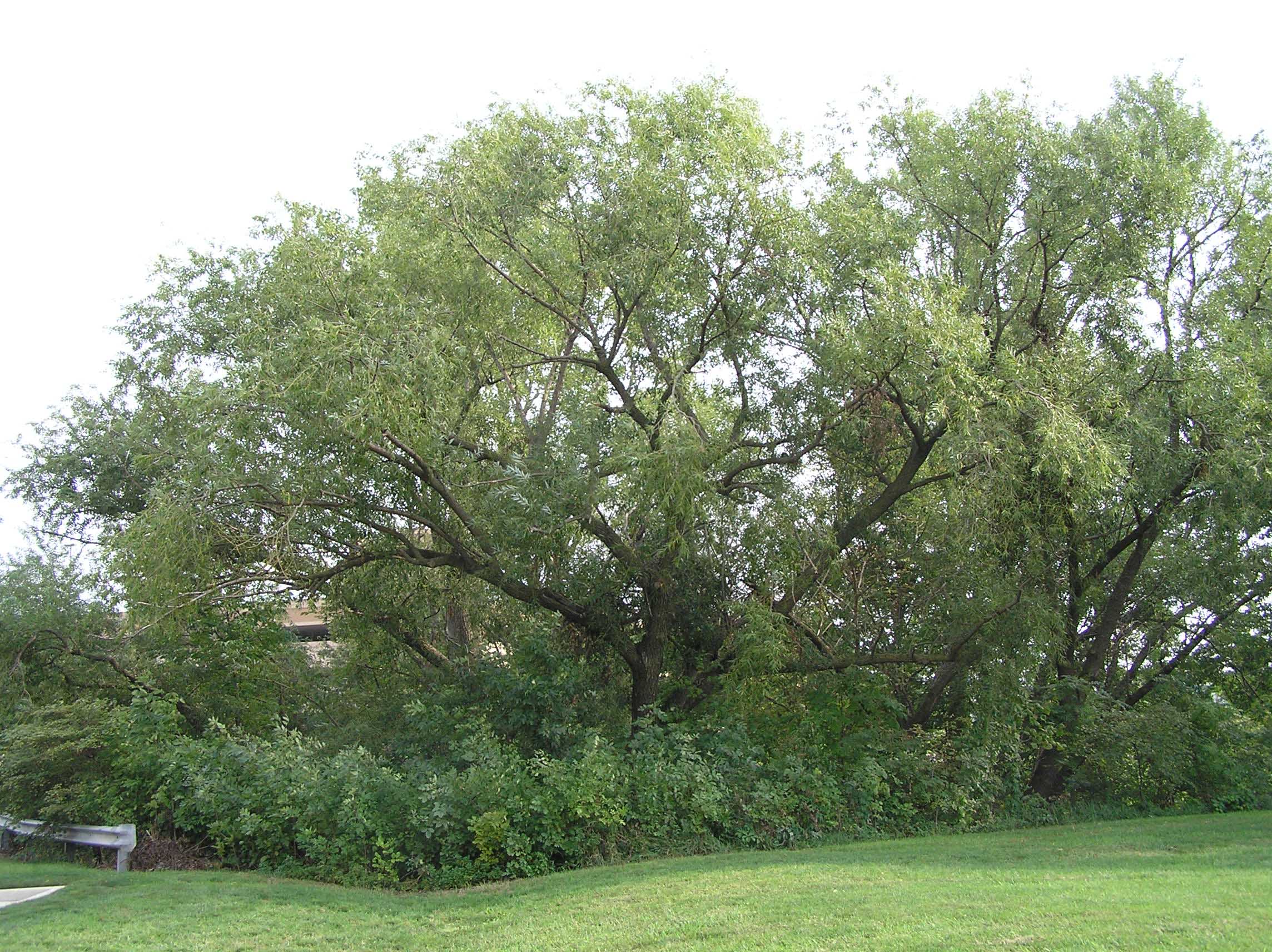
Peachleaf Willow Purdue Fort Wayne
The Peachleaf Willow is a small deciduous tree that can grow up to 20 m in height and can have several single leaning trunks in a clump, with the trunks sometimes reaching 40 cm in diameter. The leaves are lance-shaped, alternately arranged, finely toothed, and range from 5 to 14 cm long. The upper surfaces of the leaves are green, dull and.
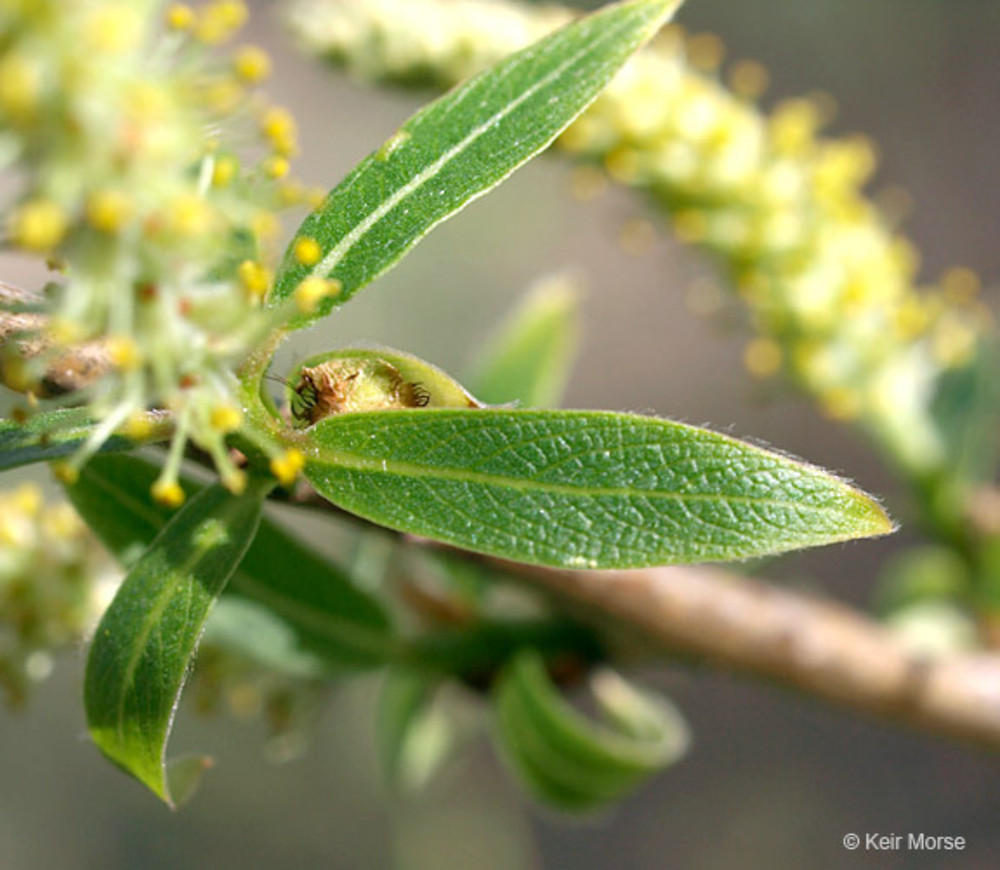
Salix amygdaloides (peachleaved willow) Go Botany
A native Manitoba tree the Peachleaf Willow is commonly found planted in shelter belts and around old homesteads in our area, alongside Eastern Cottonwood and Boxelder. The trees are fast growing and very hardy, and they get quite big - the old trees we take our cuttings from are 40' tall with a 24" caliper. An excelle

peachleaf willow (Plants of Chatfield State Park) · iNaturalist
Peachleaf willow facts tell us that these trees may grow with one trunk or several and produce pale twigs that are glossy and flexible. The foliage of this tree helps with peachleaf willow identification. The leaves resemble peach leaves-- long, slender, and a greenish yellow color on top. Underneath is pale and silvery.
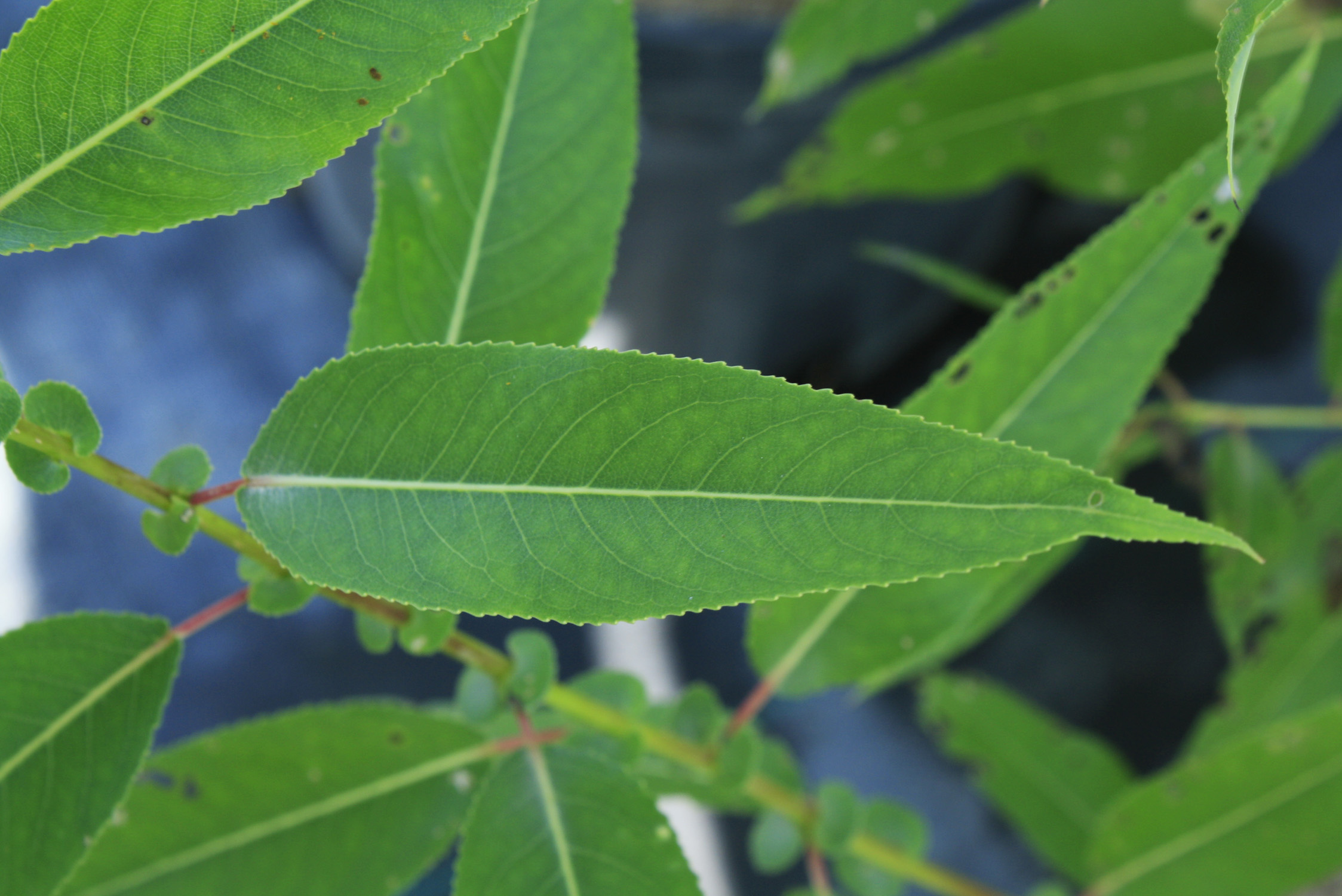
Peachleaf Willow leaf 1 Ontario Native Plant Nursery Container
38b - Branches not drooping, leaves ¾ to 1 ¼ inches wide — Peachleaf Willow; Description. Leaf: 2-6 inches long, 1 inch wide. Broadest below the middle. Dark yellowish-green, whitened beneath. Very long pointed, fine toothed, leathery. May have small, kidney-shaped stipules. Petiole very slender, may be twisted, no glands.

Peachleaf Willow Purdue Fort Wayne
Peachleaf willow trees (Salix amygdaloides) share these cultural requirements with most other members of the Salix genus. What is a peachleaf willow? It's not hard to identify peachleaf willows since they have leaves that look similar to the foliage of peach trees. Read on for peachleaf willow facts that describe this native tree.

Peachleaf Willow Purdue Fort Wayne
Peachleaf Willow (Salix amygdaloides) General Plant Information ; Plant Habit: Tree: Sun Requirements: Full Sun: Water Preferences: Wet Wet Mesic Mesic: Soil pH Preferences: Slightly acid (6.1 - 6.5) Neutral (6.6 - 7.3) Minimum cold hardiness: Zone 3 -40 °C (-40 °F) to -37.2 °C (-35) Maximum recommended zone:

Peachleaf Willow Purdue Fort Wayne
Peachleaf Willow. Salix amygdaloides. A larger forming willow shrub/tree. Being a dioecious plant it has separate male and female plants. It is a typical riverbank species that is found near creeks, swamps and woodlands. Does well in the transition zone between the bottom-lands and the surrounding landscape. Attracts a wide range of pollinators.
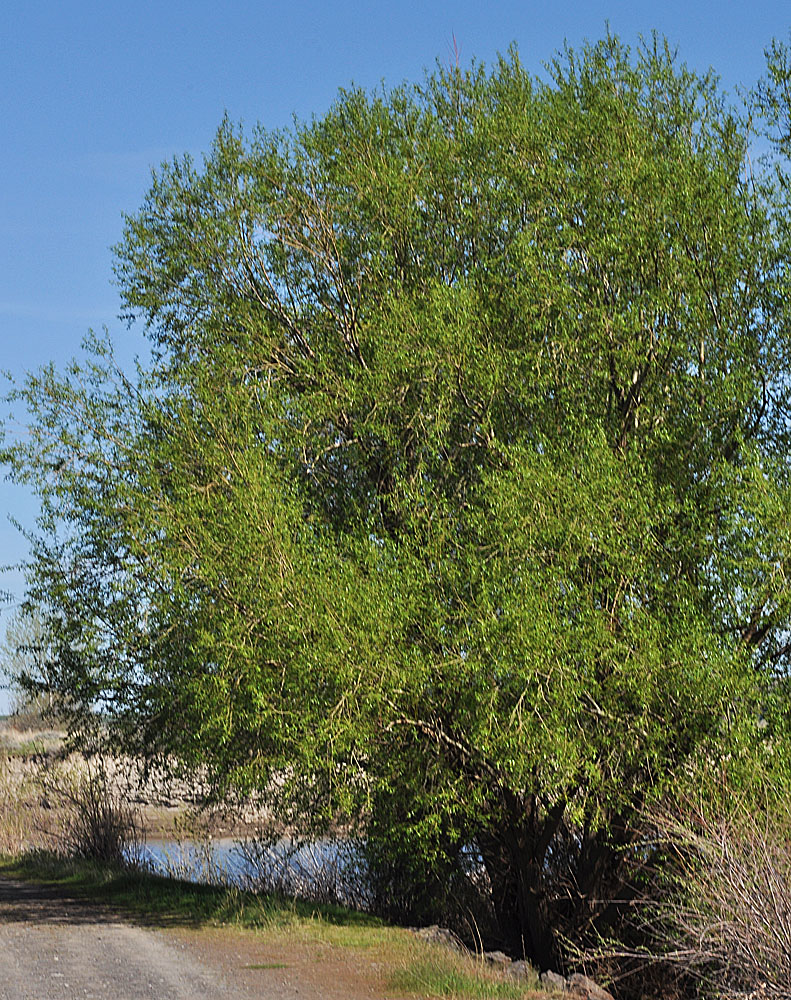
PeachLeaf Willow (Salix amygdaloides) Great Plains Nursery
A database that provides information on more than 200 native tree and shrub species, and on almost 300 insects and 200 diseases found in Canada's forests.

Salix amygdaloides (Peachleaved Willow) Minnesota Wildflowers
Salix amygdaloides, the almond leaf willow or peach leaf willow, is a species of willow native to central North America east of the Cascade Range. It can be found in southern Canada and the United States—from western British Columbia to Quebec, Idaho, Montana and Arizona to eastern Kentucky.

Salix amygdaloides Peachleaf Willow Trees Canadensis
Peachleaf Willow is important forage for wild and domestic ungulates because they generally stay green throughout summer. Special Value to Native Bees, Butterflies and Insects Peachleaf Willow, Salix amygdaloides is a host plant for the following butterfly caterpillars: - Find out more from Butterflies and Moths of North America ( BAMONA ).
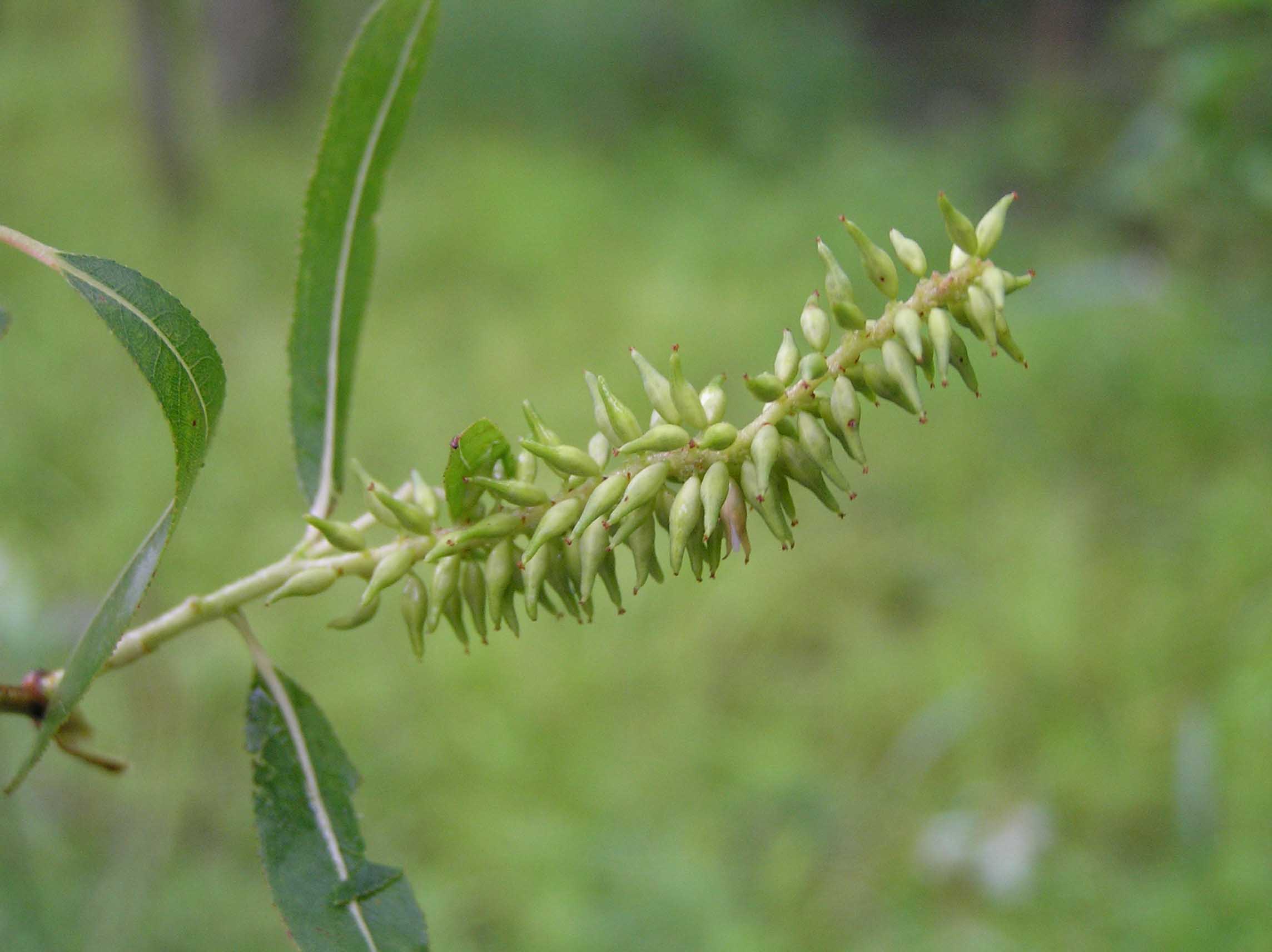
Peachleaf Willow Purdue Fort Wayne
Names. Latin (scientific) name: Salix amygdaloides Common English name: Peachleaf willow Other names: French name: Saule à feuilles de pêcher

Peachleaf Willow Purdue Fort Wayne
Peach-Leaved Willow Salix amygdaloides Willow family (Salicaceae) Description: This tree is up to 70' tall, usually forming a single trunk up to 2' wide and a rounded to slightly elongated crown. The rough bark of the trunk is brownish gray, shallowly furrowed, and somewhat scaly.
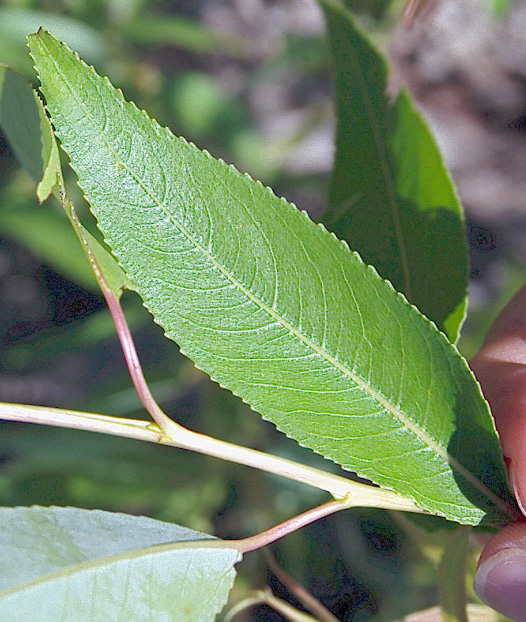
Salix amygdaloides Peachleaf willow
Photos and information about Minnesota flora - Peach-leaved Willow: mid-size tree; alternate leaves to 5 inches long, narrowly lance-elliptic, long or short taper at the tip, hairless, finely toothed, no glands at stalk tip; hairless fruit on stalks to 3.2mm long

Salix amygdaloides (Peachleaved Willow) Minnesota Wildflowers
Peach-leaf willow is a fast-growing deciduous small to medium tree with weeping branches. Prefers sites that are wet, such as streams and lakes and helps control erosion. Attracts bees and other beneficial insects and wildlife. Full sun to part shade. NATIVE RANGE. Map courtesy of USDA-NRCS Plants Database.

Peachleaf Willow Trees Canadensis
Peachleaf willow trees are commonly planted as ornamental shade trees. Peachleaf willow wood can be used to make: furniture; mats; drums; hunting lodge polls; meat-drying racks; baskets woven from thin branches; Peachleaf willow bark contains salicylic acid (aspirin) which has medicinal value and has been used to make teas to treat: fever; pain.
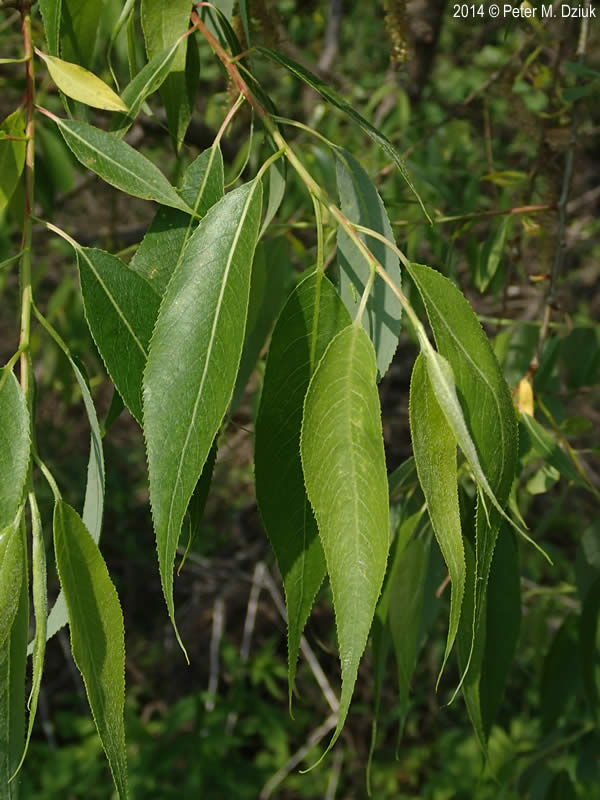
Salix amygdaloides (Peachleaved Willow) Minnesota Wildflowers
Peachleaf willow is a larval host for the Mourning Cloak and Viceroy butterflies. Birds and mammals (deer and beavers) feed from the tree early in the season. It typically grows in swamps, along water, and bottomland woodlands. It is susceptible to wind damage..